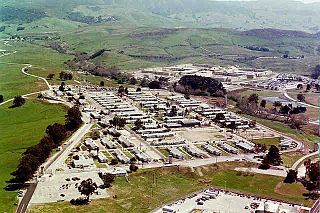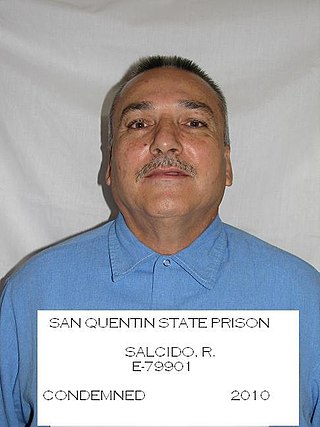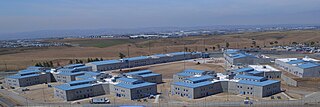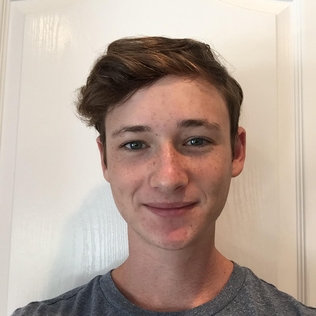
California Institution for Women (CIW) is an American women's state prison located in the city of Chino, San Bernardino County, California, east of Los Angeles, although the mailing address states "Corona," which is in Riverside County, California.

Charles Denton "Tex" Watson is an American murderer who was a central member of the "Manson Family" led by Charles Manson. On August 9, 1969, Watson, Patricia Krenwinkel, and Susan Atkins murdered pregnant actress Sharon Tate, Jay Sebring, Wojciech Frykowski, Abigail Folger, and Steven Parent at 10050 Cielo Drive in Benedict Canyon, Los Angeles. The next night, Watson traveled to Los Feliz, Los Angeles, and participated in the murders of Leno and Rosemary LaBianca. Watson was convicted of murder in 1971 and sentenced to death. As a result of a 1972 California Supreme Court decision on the constitutionality in the state of the death penalty, he avoided execution but has remained incarcerated ever since.

California Men's Colony (CMC) is an American male-only state prison located northwest of the city of San Luis Obispo in San Luis Obispo County, California, along the central California coast approximately halfway between Los Angeles and San Francisco.

California State Prison, Corcoran (COR) is a male-only state prison located in the city of Corcoran, in Kings County, California. It is also known as Corcoran State Prison, CSP-C, CSP-COR, CSP-Corcoran, and Corcoran I. The facility is just north of the newer California Substance Abuse Treatment Facility and State Prison, Corcoran.

Valley State Prison (VSP), previously the Valley State Prison for Women (VSPW), is an American state prison in Chowchilla, California. It is across the road from Central California Women's Facility. It was formerly a prison for women.
Antron Singleton, better known by his stage name Big Lurch, is an American rapper, poet and convicted murderer. He is serving a life sentence for murdering 21-year-old roommate Tynisha Ysais and eating parts of her body in April 2002. He was a member of the group Cosmic Slop Shop.
The California State University, Fullerton, massacre was a mass shooting committed by a custodian, Edward Charles Allaway, on July 12, 1976, at California State University, Fullerton, in Fullerton, California, United States. Seven people were killed as a result. It was the deadliest act of mass murder in Orange County until the 2011 Seal Beach shooting, in which eight people died.

Mule Creek State Prison (MCSP) is a California State Prison for men. It was opened in June 1987, and covers 866 acres (350 ha) located in Ione, California. The prison has a staff of 1,242 and an annual operating budget of $157 million.

California State Prison, Centinela (CEN) is a male-only state prison located in Imperial County, California, approximately 20 miles (32 km) from Imperial and El Centro. The facility is sometimes referenced Centinela State Prison.

Ramón Bojórquez Salcido is a Mexican convicted spree killer who is currently on death row in California's San Quentin State Prison. He was convicted for the 1989 murders of six female family members and one male supervisor at his workplace. His victims included his wife and two of his daughters, four-year-old Sofía and 22-month-old Teresa. A third daughter, three-year-old Carmina, was left lying in a field beside the bodies of her sisters for thirty-six hours after being slashed across the throat by her father but was eventually rescued and her father captured.

California Correctional Institution (CCI) is a supermax state prison in the city of Tehachapi in Southern California. CCI is sometimes referred to as "Tehachapi prison" or "Tehachapi". As stated by the California Department of Corrections and Rehabilitation, its overall mission is "to incarcerate and control felons, while providing the opportunity for meaningful work, training and other programs. The prison provides programs for those inmates who are willing to work and participate fully in available programs."

California State Prison, Sacramento (SAC) is a male-only state prison located in the city of Folsom, in Sacramento County, California. The facility is also referenced as Sacramento State Prison, CSP-Sacramento, CSP-SAC, and occasionally, New Folsom or New Folsom Prison which was its official name prior to October 1992.

The murder of Stephanie Kuhen in Los Angeles, California created significant media attention in the United States and led to crackdowns on Los Angeles street gangs.
The murder of Marcy Renee Conrad was perpetrated by Anthony Jacques Broussard, a 16-year-old high school student. Conrad's death gained national attention due to the age of her killer, forcing a re-evaluation of California statutes regarding juvenile sentencing for violent crimes. The case triggered widespread media coverage, as a stark example of social disaffection among suburban youth.

Richard J. Donovan Correctional Facility (RJD) is a California state prison in unincorporated southern San Diego County, California, near San Diego. It is operated by the California Department of Corrections and Rehabilitation. The facility sits on 780 acres (320 ha). It is the only state prison in San Diego County. It is named for Richard J. Donovan.

Michael Thomas Gargiulo is a convicted American serial killer. He moved to Southern California in the 1990s and gained the nickname The Hollywood Ripper. He was convicted of two counts of first-degree murder and sentenced to death on July 16, 2021. As of April 2023, he was incarcerated in the California Health Care Facility; in September 2024, he was extradited to Cook County, Illinois, to face trial for a 1993 murder.
In March 2015, two incidents of bullying and assaults occurred in Rowland Heights, California, with Chinese nationals as the perpetrators.

Regis Deon Thomas is an American convicted murderer and Bloods gang member who was sentenced to death for the 1993 murders of Kevin Michael Burrell and James Wayne MacDonald, two officers in the Compton Police Department who were shot dead during a traffic stop in the City of Compton. They were the only Compton police officers killed in the line of duty in the department's 65-year history. Thomas was also convicted of murdering another man in 1992 in Torrance, California.

On January 2, 2018, 19-year-old University of Pennsylvania sophomore Blaze Bernstein was killed after leaving home to meet an acquaintance at a park in California. Authorities later charged his former high school classmate Samuel Woodward with the murder, declaring that the incident was a hate crime.












